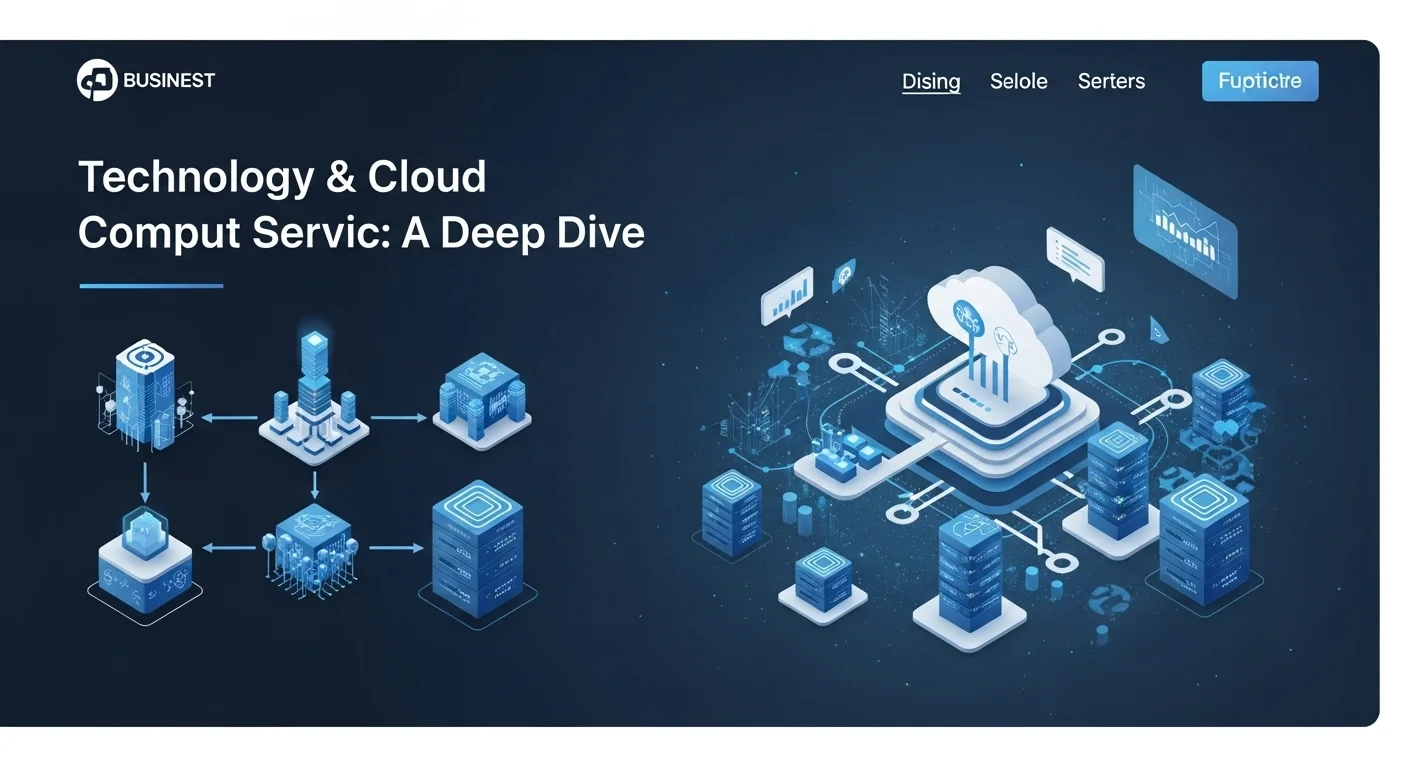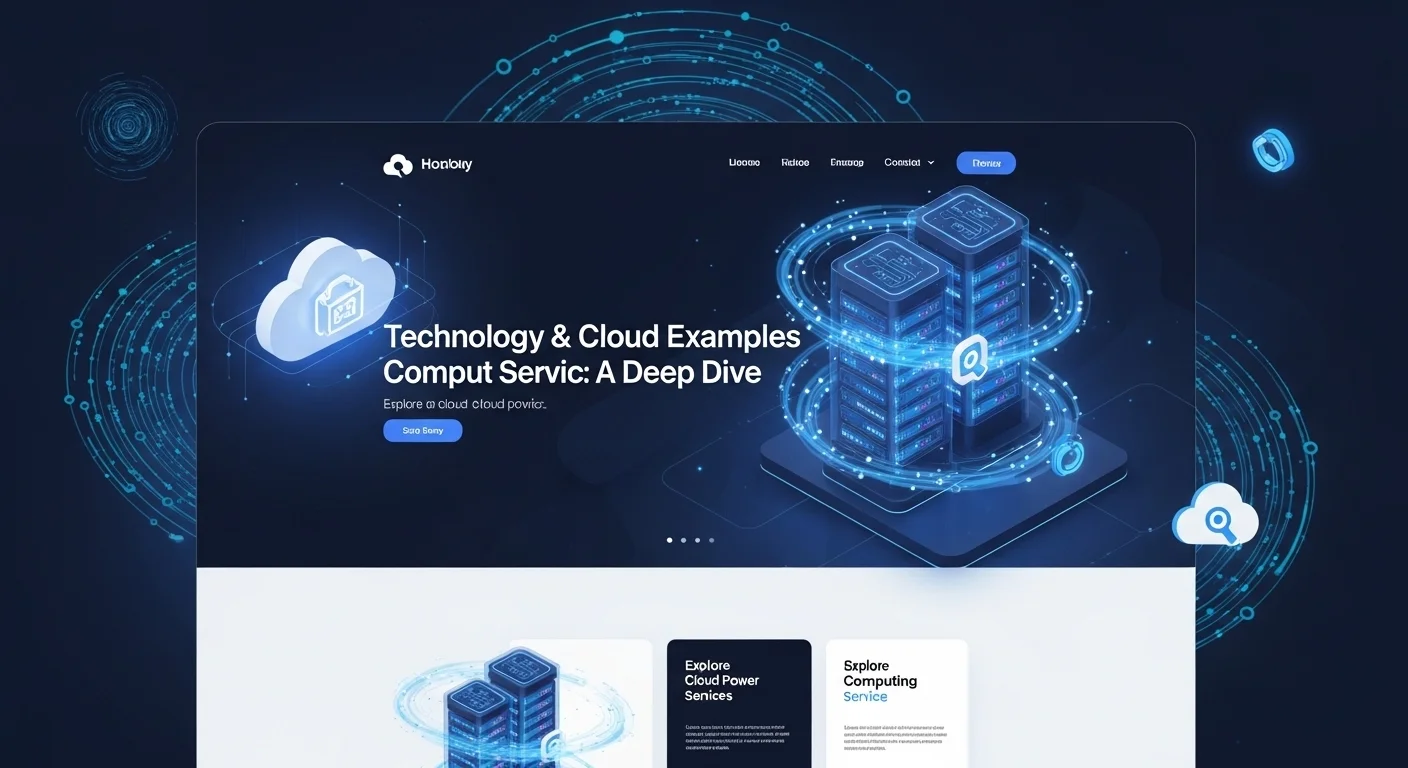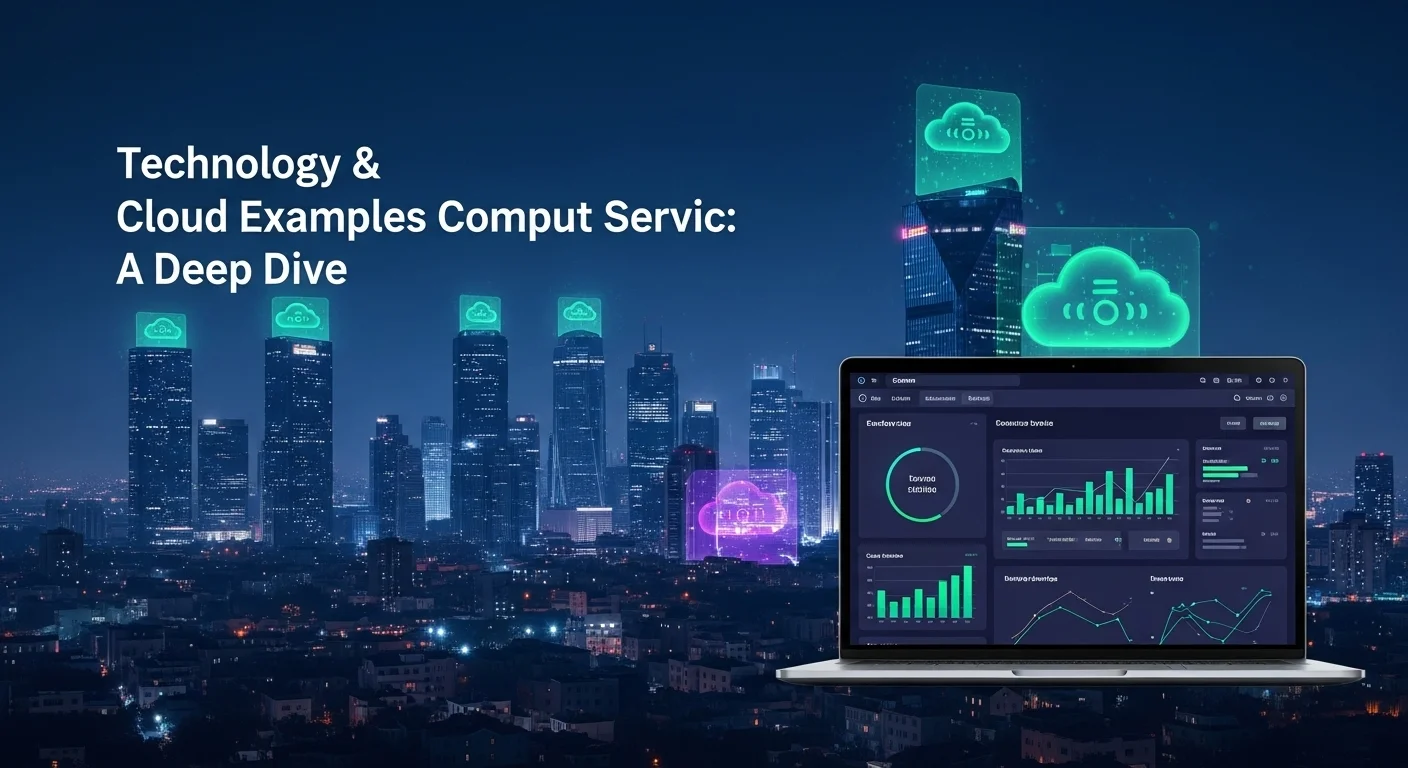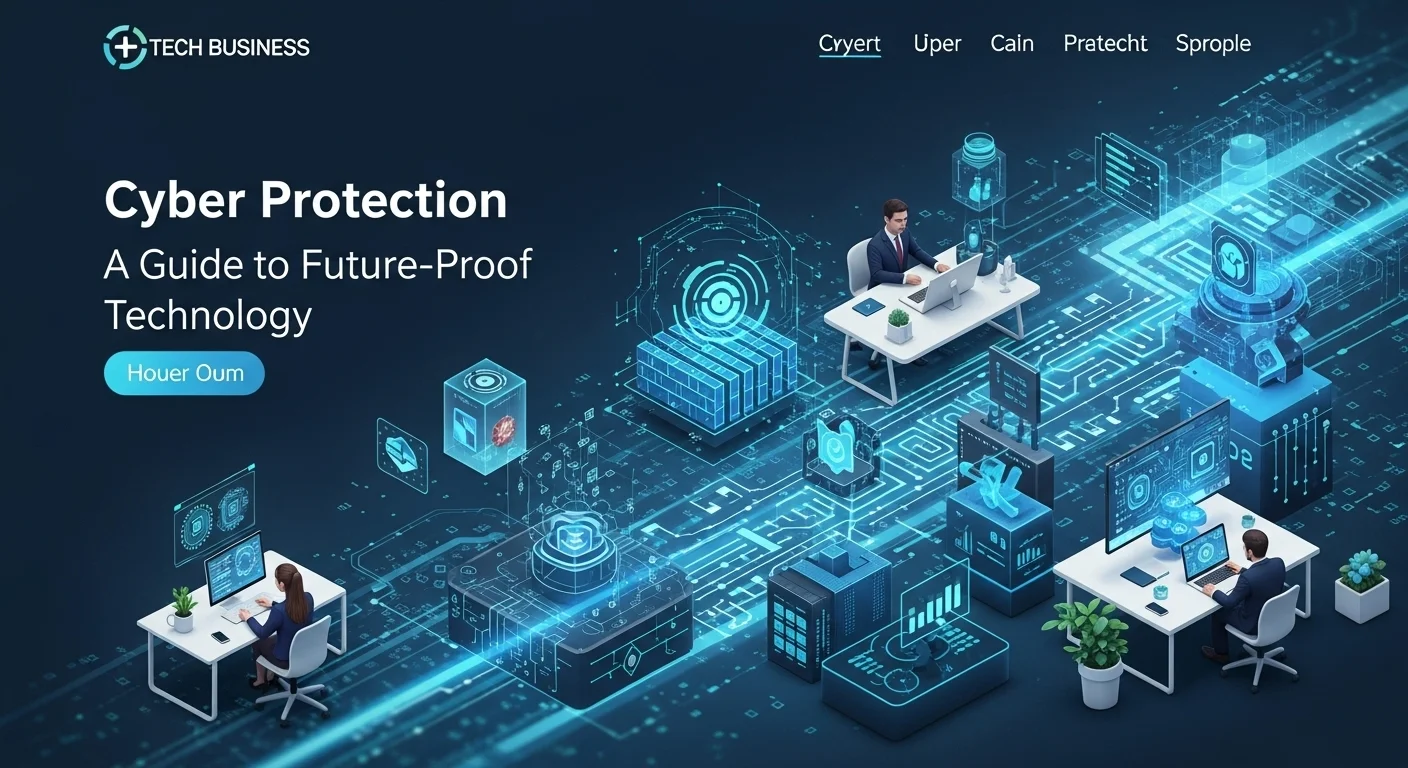Cloud Computing Services Explained: A Simple Guide to IaaS, PaaS & SaaS

Executive Summary
Let's be honest, the world of technology can feel like a maze of confusing acronyms. I've spent years helping businesses navigate this landscape, and one of the most common points of confusion is 'the cloud.' This article is the guide I wish I had when I started. We're going to demystify cloud computing services, breaking them down into plain English. We'll explore the core models that are changing how businesses operate: Infrastructure as a Service (IaaS), Platform as a Service (PaaS), and Software as a Service (SaaS). Whether you're a business leader trying to gain a competitive edge or a tech enthusiast eager to learn, understanding these concepts is key. This guide will give you a solid foundation, packed with real-world examples, so you can make smart decisions in our cloud-first world.
Table of Contents
Table of Contents
- What is Cloud Computing and Why is it So Important?
- The Core Models: IaaS, PaaS, and SaaS Explained
- Comparing the Titans of the Cloud: AWS vs. Azure vs. GCP
- Business Strategy: Choosing the Right Cloud Model
- Best Practices for Cloud Migration and Management
- Cloud Security: A Shared Responsibility
- Performance and Cost Optimization (FinOps)
- The Future of Cloud Computing
What is Cloud Computing and Why is it So Important?
In the tech world, we love our jargon, but let's cut through the noise. At its heart, cloud computing is simply about accessing services—like data storage, servers, software, and networking—over the internet instead of from your own computer's hard drive. Think about it: instead of buying and maintaining bulky, expensive physical servers in your office (I've seen server rooms that look like forgotten museums!), you rent computing power from a specialized company. This simple shift is a revolution.
The importance of this can't be overstated. I remember the early days when getting a project started meant a huge upfront investment in hardware. It was slow, expensive, and risky. The cloud changes all that. It allows a business to trade a large capital expense (CapEx) for a predictable operational expense (OpEx). You pay as you go, just like your electricity bill. This flexibility is a game-changer. Need more power for a big holiday sale? You can scale up in minutes. Is business slow in the summer? You can scale back down so you're not paying for idle equipment. This elasticity gives startups the power to compete with established giants and allows large companies to innovate faster than ever before. It's not just about saving money; it's about gaining speed and agility in a fast-moving market.
Understanding the Core Models: IaaS, PaaS, and SaaS Explained
To really get a handle on cloud computing, you need to understand its three main service models. I like to think of them as different levels of 'do-it-yourself.' Each model offers a different degree of control and management, catering to different needs. Let's break them down.
1. Infrastructure as a Service (IaaS)
I often describe IaaS as leasing a plot of land with all the utilities connected. You get the fundamental building blocks—virtual servers, networking, and data storage—but you're responsible for building the house on top. You manage the operating system, the software, and your applications. The cloud provider handles the physical data centers and hardware.
This model offers the most control and flexibility, making it perfect for companies that have specific technical needs or want to migrate existing applications to the cloud without rebuilding them (a strategy we call 'lift-and-shift'). It’s also fantastic for development teams that need to create and dismantle testing environments on the fly. Here are some of the biggest names you'll see in the IaaS space:
- Amazon Web Services (AWS) EC2: The industry pioneer, offering incredibly flexible and scalable virtual servers, or 'instances,' that can be configured for almost any workload.
- Microsoft Azure Virtual Machines: A powerhouse for businesses, especially those already using Microsoft products. It provides a huge range of virtual machines supporting both Windows and Linux.
- Google Compute Engine (GCE): Known for its powerful global network and excellent performance, GCE lets you run your virtual machines on the same infrastructure that powers Google Search and YouTube.
- DigitalOcean Droplets: A favorite among developers and startups for its simplicity, predictable pricing, and user-friendly interface.
With IaaS, you have the raw power and control to build things exactly your way.
2. Platform as a Service (PaaS)
If IaaS is leasing land, PaaS is like renting a fully equipped workshop. The provider manages not just the hardware but also the operating systems, middleware, and development tools. This leaves you free to focus purely on what you do best: building, testing, and deploying your applications. You don't have to worry about software updates, security patches, or capacity planning for the underlying systems.
I've seen development teams double their productivity by moving to a PaaS model. It streamlines workflows and lets them innovate instead of getting bogged down in infrastructure management. Here are a few leading examples:
- Heroku: Famous for its simplicity and developer-first approach, Heroku makes it incredibly easy to deploy, manage, and scale applications written in various popular languages.
- AWS Elastic Beanstalk: An orchestration service from AWS that handles everything from capacity provisioning and load balancing to auto-scaling and health monitoring for your web apps.
- Google App Engine: A fully managed, serverless platform that automatically scales your application based on traffic. You just upload your code, and Google handles the rest.
- Microsoft Azure App Services: A robust platform for building web and mobile apps, offering fantastic integration with developer tools like Visual Studio and GitHub.
PaaS is the perfect middle ground for anyone who wants to build custom software without managing the underlying plumbing.
3. Software as a Service (SaaS)
SaaS is the model we all use every day, often without even thinking about it. It's like subscribing to a magazine or a streaming service. You get a finished, ready-to-use software product delivered over the internet. The provider handles everything—the software, the infrastructure, the maintenance, the updates. You just log in and use it, typically through a web browser.
From a business perspective, SaaS is incredibly convenient. It allows companies to use powerful enterprise-grade software with zero installation or management overhead, usually for a predictable monthly or annual fee. These examples will likely sound very familiar:
- Salesforce: The undisputed leader in Customer Relationship Management (CRM) software, all delivered through the cloud.
- Microsoft 365: The suite of productivity tools most of us know (Word, Excel, Teams), supercharged with cloud storage and collaboration features.
- Google Workspace: Google’s suite of collaboration and productivity tools, including Gmail, Docs, Sheets, and Drive, which has become a staple for businesses worldwide.
- Dropbox: A simple and effective solution for file storage and synchronization across all your devices.
- Slack: The channel-based messaging platform that has redefined how teams communicate.
Understanding these three models—IaaS, PaaS, and SaaS—is the key to unlocking the power of the cloud for your specific goals.

A Complete Guide: Comparing the Titans of the Cloud
Once you understand the basic models, the next question is always, 'Which provider should I choose?' The cloud market is dominated by three giants: Amazon Web Services (AWS), Microsoft Azure, and Google Cloud Platform (GCP). I've worked extensively with all three, and I can tell you that while they offer similar core services, they each have their own personality, strengths, and ideal use cases. Think of it not as which one is 'best,' but which one is 'best for you.'
A Technical Look: AWS vs. Azure vs. GCP
Choosing a cloud provider is a major strategic decision. It's not just a technical choice; it's about finding a partner that aligns with your business strategy, team skills, and future goals.
Amazon Web Services (AWS)
As the first major player on the scene, AWS has a head start that shows. It has the most comprehensive and mature portfolio of services on the market. If you can think of an IT need, AWS probably has a service for it. Their global reach is also immense, which is critical for businesses serving an international audience.
- The IaaS King: Beyond the basic EC2 virtual machines, AWS's infrastructure services are the industry benchmark. Amazon S3 for object storage is so ubiquitous that it's become a verb. Services like Virtual Private Cloud (VPC), Elastic Load Balancing (ELB), and Route 53 for DNS are the foundational pillars of modern cloud architecture.
- Beyond the Basics: AWS didn't stop at infrastructure. AWS Lambda essentially created the serverless computing movement, allowing developers to run code without thinking about servers at all. For databases, their offerings range from the easy-to-manage Amazon RDS for relational databases to the lightning-fast DynamoDB for NoSQL workloads.
- Who is it for? AWS is a fantastic choice for nearly everyone, from cloud-native startups to large enterprises seeking a feature-rich, reliable environment. The massive community and wealth of documentation are a huge help.
Microsoft Azure
Azure is the fast-growing challenger and has brilliantly leveraged Microsoft's long-standing dominance in the enterprise world. Its killer feature is its seamless integration with on-premises Microsoft technologies like Windows Server, Office 365, and Active Directory. For any company heavily invested in the Microsoft ecosystem, Azure often feels like a natural extension of their own data center.
- The Hybrid Cloud Champion: I've found that no one does hybrid cloud better than Azure. Tools like Azure Arc let you manage your on-premise and cloud resources from a single dashboard, which is a massive win for organizations in transition.
- Developer-Friendly Platform: Azure shines as a PaaS provider. Azure App Services, combined with deep integrations into Visual Studio and GitHub (which Microsoft owns), creates a dream environment for developers, especially those working with .NET.
- Who is it for? Large enterprises, particularly those in regulated industries, trust Azure for its strong focus on compliance and security. Its tight integration makes it the default choice for many businesses already running on Microsoft software.
Google Cloud Platform (GCP)
While third in market share, GCP is a technological powerhouse, excelling in the areas where Google itself is a world leader: big data, machine learning (AI), containerization, and global networking. They've built a reputation for innovation and for championing open-source technologies.
- The Data and AI Specialist: When clients have massive datasets to analyze, I often point them to GCP. BigQuery, their serverless data warehouse, is astonishingly fast. Their AI Platform offers a suite of tools that makes complex machine learning accessible to more developers.
- The King of Kubernetes: Google originally created Kubernetes, the open-source system that has become the standard for managing application containers. As you'd expect, Google Kubernetes Engine (GKE) is widely considered the most advanced and user-friendly managed Kubernetes service available.
- Who is it for? GCP is a great fit for data-driven companies, tech-forward startups, and anyone who values open-source and wants to avoid vendor lock-in. Their customer-friendly pricing models are also a big draw.
Beyond the Big Three
While the big three get most of the attention, there's a whole ecosystem of other providers like Oracle Cloud (strong in enterprise databases), IBM Cloud (focused on hybrid and regulated industries), and developer-favorites like DigitalOcean and Vultr, which offer simple, affordable solutions.
Business Strategy: Choosing the Right Cloud Model
So, how do you choose between IaaS, PaaS, and SaaS for a specific project? Here’s a simple framework I use with my clients:
- Choose SaaS when: You need a standard, off-the-shelf solution fast. Think email, CRM, or HR software. Your priority is convenience and minimal management.
- Choose PaaS when: You're building a custom application and want your developers to be as productive as possible. You want to focus on writing code, not managing infrastructure.
- Choose IaaS when: You need maximum control. You're moving complex, existing systems to the cloud, or you have very specific performance or security requirements that demand custom configurations.
Thinking Hybrid and Multi-Cloud
Today, it's rare for a company to be 100% in a single cloud. Most are adopting smarter, more flexible strategies:
- Hybrid Cloud: This approach blends a public cloud (like AWS) with a private, on-premises data center. It's perfect for businesses that have data they can't put in the public cloud for regulatory reasons but still want to leverage the cloud's scalability for other parts of their business.
- Multi-Cloud: This means using services from more than one public cloud provider. Why? To avoid being locked into one vendor, to use the 'best-of-breed' service for a specific job (like GCP for data and AWS for compute), and to improve resilience.
The modern cloud strategy isn't about picking one path; it's about intelligently mixing and matching these services to build an architecture that's powerful, resilient, and perfectly aligned with your business goals.

Tips and Strategies to Master Your Cloud Experience
Getting into the cloud is one thing; thriving there is another. I've seen companies save millions, and I've seen others get hit with shocking, unexpected bills. The difference often comes down to strategy and best practices. Here are some practical tips I've gathered over the years for migration, security, and cost management to ensure your cloud journey is a successful one.
A Roadmap for Cloud Migration: The 6 R's
When a client asks me how to start their cloud journey, I always walk them through these six common strategies. Thinking about each application through this lens brings a lot of clarity.
- Rehost (aka 'Lift and Shift'): This is the simplest path. You move an application from your data center to the cloud with minimal changes. Think of it as copying and pasting a virtual machine. It's fast and a great first step, but you might not get all the cloud-native benefits.
- Replatform ('Lift and Reshape'): Here, you make a few small tweaks to take advantage of the cloud. A common example I recommend is moving a self-managed database to a managed cloud database service like Amazon RDS. It reduces your management burden significantly.
- Repurchase ('Drop and Shop'): This means switching to a completely new, cloud-native product, usually a SaaS solution. For example, retiring your old on-premises CRM and moving to Salesforce.
- Refactor/Rearchitect: This is the most involved but often the most rewarding strategy. You completely redesign your application to be cloud-native, perhaps breaking it into smaller microservices. It's more work upfront but pays huge dividends in scalability and efficiency down the line.
- Retire: A migration is a great time for house-cleaning. I often find that up to 10-20% of a company's IT portfolio can simply be turned off, saving money and reducing complexity.
- Retain: Sometimes, the right move is to do nothing. Certain applications might need to stay on-premises for regulatory reasons or because the cost of moving them is just too high.
Cloud Security: A Shared Responsibility
Security in the cloud is a partnership. I always use this analogy: your cloud provider is like the landlord of an apartment building. They are responsible for securing the building itself—the physical security, the foundation, the main gates. This is 'security **of** the cloud.' But you, the tenant, are responsible for locking your own apartment door and windows. This is 'security in the cloud.' You control your data, who has access to it, and how your services are configured.
Key Security Habits:
- Lock Down Access (IAM): Always follow the 'principle of least privilege.' Give users and services only the permissions they absolutely need. And please, use multi-factor authentication (MFA) everywhere you can.
- Encrypt Everything: Encrypt your sensitive data both when it's stored (at rest) and when it's moving over the network (in transit). All major cloud providers make this easy.
- Build Virtual Fences: Use network security tools like Virtual Private Clouds (VPCs) and firewalls to create secure, isolated zones for your applications.
- Keep an Eye Out: Turn on logging for everything. Use monitoring tools to watch for strange activity and get alerts. You can't protect against what you can't see.
- Know the Rules: Understand the compliance standards for your industry (like GDPR, HIPAA, or PCI DSS) and use the provider's tools to help you meet those obligations.
Performance and Cost Optimization (FinOps)
One of the biggest myths about the cloud is that it's automatically cheaper. It *can* be, but it requires active management. I once worked with a startup that left a powerful test environment running over a weekend and came back to a five-figure bill. Don't let that be you!
Performance Boosters:
- Auto-Scaling: Set up your applications to automatically add or remove servers based on traffic. This ensures great performance during busy times and saves money when it's quiet.
- Load Balancing: Spread traffic across multiple servers to prevent any single one from being overwhelmed. It's crucial for reliability.
- Use a CDN: A Content Delivery Network (CDN) stores copies of your content in locations all around the world, making your website load much faster for international users.
Cost-Cutting Strategies:
- Right-Sizing: This is the easiest win. Regularly check if your servers are being fully utilized. If a server is only using 10% of its capacity, shrink it down to a smaller, cheaper size.
- Reservations and Savings Plans: If you know you'll be using a certain amount of computing power for the next year or three, you can commit to it upfront and get a massive discount (often 40-70%).
- Spot Instances: For non-critical jobs like data processing, you can bid on spare cloud capacity at a huge discount (up to 90%!). The catch is that the provider can take it back with little notice.
- Turn Things Off: It sounds simple, but you'd be surprised. Shut down development and test environments on nights and weekends. Every little bit helps.
The Future of Cloud Computing: What's Next?
- Serverless Computing: This is the ultimate evolution of PaaS. You just write code in small functions (like AWS Lambda) and the cloud runs it for you, handling all scaling automatically. It's incredibly efficient.
- AI and Machine Learning as a Service: The cloud is making AI accessible to everyone. You can now use powerful, pre-trained AI models through a simple API call for things like image recognition or language translation.
- Edge Computing: With the rise of IoT devices, it's becoming important to process data closer to where it's created (the 'edge') instead of sending it all to a central cloud. This reduces lag time for critical applications.
- Quantum Computing: It's still very early, but you can already access and experiment with quantum computers through the cloud. This is opening up a whole new frontier for research and complex problem-solving.
By staying on top of these strategies and trends, you can ensure that the cloud is not just a utility, but a powerful engine for innovation. For more technical deep dives, I always recommend the official AWS News Blog as a fantastic resource straight from the source.
Expert Reviews & Testimonials
Sarah Johnson, Business Owner ⭐⭐⭐⭐
This was a great starting point! I finally get the difference between IaaS and SaaS. I'd love to see a follow-up with more case studies for small retail businesses.
Mike Chen, IT Consultant ⭐⭐⭐⭐⭐
As an IT consultant, I appreciate how this breaks down complex topics without oversimplifying. The comparison of AWS, Azure, and GCP was particularly useful for my client discussions.
Emma Davis, Tech Expert ⭐⭐⭐⭐⭐
An excellent and comprehensive guide. As a developer, the practical advice on migration strategies and cost optimization is invaluable. I'm saving this for my team.



